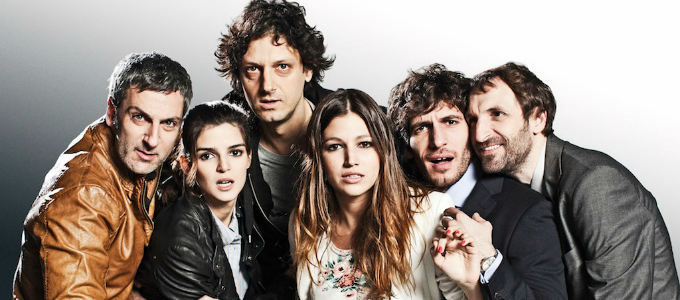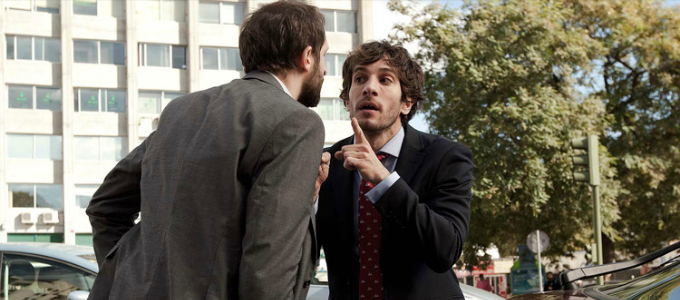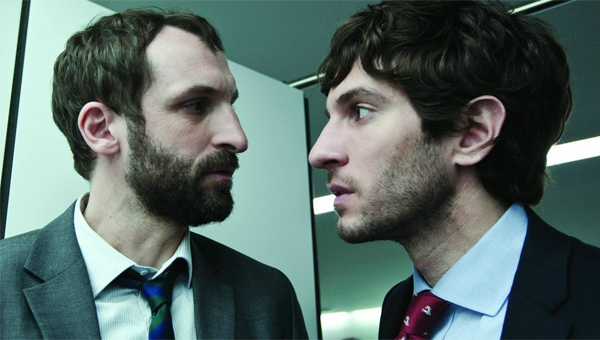 We spoke to Santi Amodeo about his movie Quién mató a Bambi?, which kicked off the Cornerhouse’s Viva! Festival. Santi is joined by Jessie Gibbs, a Cornerhouse representative primarily serving as a translator.
We spoke to Santi Amodeo about his movie Quién mató a Bambi?, which kicked off the Cornerhouse’s Viva! Festival. Santi is joined by Jessie Gibbs, a Cornerhouse representative primarily serving as a translator.
Jack Stocker: How would you define “Quién mató a Bambi”?
Santi Amodeo: It’s a comedy, a crisis comedy. It’s a remake of a Mexican film called “Matando Cabos”. It was a violent film, maybe close to Guy Ritchie’s films. My version, my remake has some violence as well but maybe not the same as the culture of Mexican and Spanish. My film is a bit softer, no?
Jessie Gibbs: Do you define it as a comedy or a violent film?
SA: A comedy in the style of Guy Ritchie, perhaps. It’s a bit similar to a new American comedy style, a bit. Maybe a little bit of the Coen brothers.
JS: What’s the first and foremost reaction you want from your audience?
SA: For me I’m a bit nervous because I don’t know how it will be received. For me, I’ve got a lot of expectation and curiosity and suspense. I don’t know if the jokes that work in Spain will work the same here. I’ll be really happy if people laugh.
“Even though it was a serious incident like a kidnapping, they were almost like clowns.”
JS: One of the things that struck me was that the peripheral characters were all very bright and cheerful and completely oblivious to the chaos that was going on. The surroundings, too, were bright and vivid with very strong colours flowing through them. What led you to make them that way and how did you maintain that throughout the film?
SA: I wanted to have that contrast of having a really fun and pleasurable atmosphere but at the same time this really dark storyline that was going on. That was very deliberate. I also wanted to have stupid characters doing stupid things and making a mess of it. Even though it was a serious incident like a kidnapping, they were almost like clowns. Hence the party atmosphere and the bright colours.
JS: That cheeriness and the happy-go-lucky atmosphere made the scarier elements even creepier and more impactful. How did you manage the balance of the comedy and laughter versus the darker elements?
SA: It’s difficult. I’m not completely sure if I managed to get it. For some people it’s a bit strong. For example, my mother! But different people have different reactions. In Chicago there were a lot of Latinos in the audience as well as Americans, and I feel they didn’t react as strongly to the violence as much as in Spain for example, or in Europe. It’s another culture there. In the Mexican film the violence is much harder than in my film. [he slaps his fist into his palm]
JG: Are we gentler in Europe?
SA: Maybe we’re not as used to the violence. I don’t know. It’s a perception, a feeling. Maybe I’m wrong. I’m not sure.
JS: The kidnappers are very inept. It seems to be one of those stories that doesn’t have straightforward villains. Did you find it difficult to make sure people didn’t have those overly villainous qualities, and to make them sympathetic and human at the same time?
SA: You think so? It was the same as the balance between the violence and comedy. I want people to feel that they are not bad guys doing bad things. It was trying to get that balance. No one’s a goodie in it but no pure baddies either. I wanted them to be seen more as people who’re down on their luck. People who’ve been cast a bad card and are trying to make something of their lives. A big black comedy element of the film is that one of the most victimised characters isn’t just a victim of circumstance, but also gets all the physical violence as well.
JS: The way the plotlines converged and diverged reminded me slightly of Pulp Fiction. Was that intentional?
SA: It was one of the references. This reference was in the original Mexican film, it’s a good film for me, it’s a good influence. It’s good to use.
JG: How close is your film to [Matando Cabos]?
SA: It’s a bit different. I changed the plot and some of the characters are different. The original idea, the central idea remains the same but there are additional characters and plotlines that I’ve invented. It translates to “Killing Cabos”.

JS: Did you take any other creative liberties with the original stories?
SA: There are several differences. The original was much darker and it did have very specific things relating to being Mexican and the relationship it had with an America, whereas my film is perhaps a bit lighter.
JS: Are there any Spanish cultural archetypes that are prevalent throughout your film that might not be immediately obvious to British audiences?
SA: The corrupt lawyer I feel is a very Spanish archetype. I wonder how audiences will react to it here. In Chicago it went down really well but that particular archetype was almost exotic.
JG: I see that as an American archetype as well so it’s not an unfamiliar thing.
SA: I hope so, I hope so. All the characters are more or less archetypes in a way. In Spanish society in particular, classes are quite fixed and it’s difficult to move between them. The relationship between the bosses and the employees in particular are very fixed and defined. I’m not yet sure whether it’s the same here or not.
JS: Were there any other major influences that affected the film, Spanish or British?
SA: I’ve already mentioned the Coen brothers. Guy Ritchie’s influence was palpable on the “Matandos Cabos”. They’re good references. I like those directors, I felt comfortable playing with that. I think that everybody can feel that influence – it’s very clear in Ritchie’s films. I think my film is clear as well but maybe his film is stronger, you know?
JS: In terms of the aesthetics, the two main characters are dressed very sharply. What it reminded me of is models in aftershave or car adverts. Is that a feature of Spanish cinema to have those very attractive male leads? Was it a deliberate choice to style them like that?
SA: Not quite. We have a smaller ‘star system’. We have only three or four little stars. To be honest, if you want to sell your film you have to put them in, and that’s the way they present themselves, in that handsome and attractive manner.
JG: Did you always have these actors in mind?
SA: Well as I said, there is a smaller number of stars in Spain. The producers advised me to pick them. If you don’t have them in your film, the production generally suffers accordingly in distribution. So they were kind of a necessity, but they are excellent actors. and Julián [Villagrán] is not exactly a star but he is a very good friend of mine, is in all my films, and has a very good reputation. But Quim Gutiérrez is very famous, and the girls are both very famous.
“At the moment it’s a difficult time for medium budget cinema…”
JS: Is there anything you feel the Spanish film industry does exceptionally well compared to the rest of the world?
SA: There’s great cinema produced all around the world. Lots of different national film industries like the French, British and the Spanish produce great cultural works and also big budget products, but at the moment it’s a difficult time for medium budget cinema. Good small budget cinema is still getting made and big budget stuff is still happening but anything in the middle has almost disappeared recently as a result of the financial crisis.
JS: How did you decide which music was appropriate for what you were trying to get across in a scene?
SA: I worked with a musical director, and we wanted to create a contrast between the action and this slightly crazy upbeat music. In truth the song at the very end of the film was a request of Sony, who were one of the financial contributors. I had no idea where to put it so I thought ‘might as well put it at the end’. I get a lot of questions about why I chose that song in particular – it’s because I had to!
JS: Why name the film after Bambi?
SA: The name comes from a Sex Pistols film that was never made. It’s a song. The original Mexican film has a wordplay, which could be interpreted as “Tying Up Cabos” or “Killing Cabos”, but it doesn’t work in a more modern context. The Sex Pistols film was never made, until I made it. It’s an in-joke between me and my brother, and that’s part of why the Bambi character was created. He exists in the original film but has been altered slightly.
JS: In many ways it’s quite a complex film in terms of the interweaving narrative and that careful characterisation. What did you find the hardest part of making it?
SA: It was quite difficult to tie them up, because as you said there are many elements. The key thing is that you have to be careful people don’t miss the plot. I want the audience to be slightly confused but not completely. You want the audience involved but not lost in the plot. That’s the game.
httpvh://youtu.be/8Eet9RYbtdU


One thought on “Interview with Santi Amodeo”
Comments are closed.